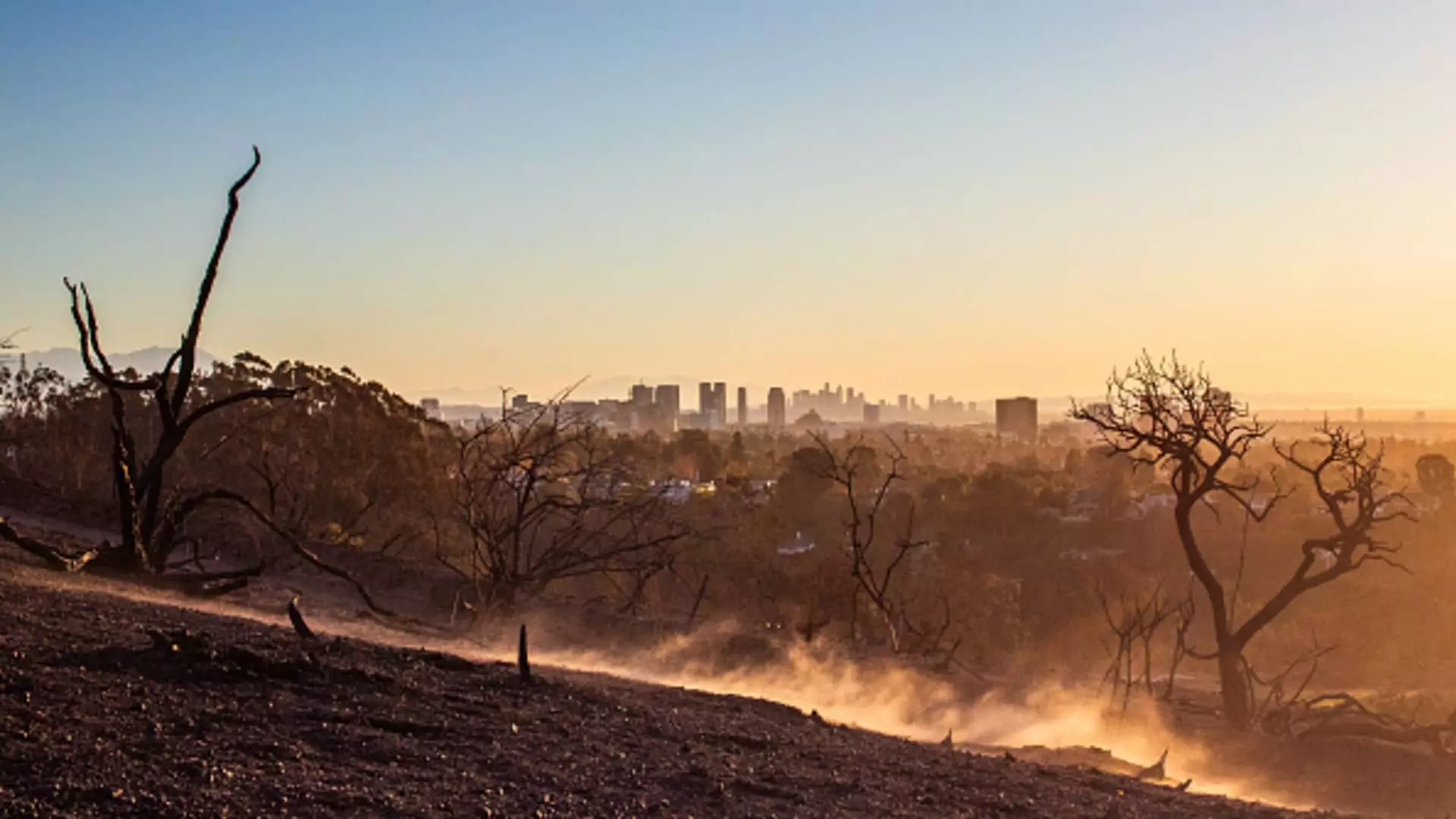In recent years, the landscape of homeowners’ insurance has undergone a seismic shift, particularly in regions like California that are prone to devastating wildfires. Factors such as rising premiums and the widespread effects of natural disasters have prompted an urgent need for homeowners to reassess their coverage. As the intensity and frequency of these catastrophic events grow, the repercussions are felt not only in the immediate vicinity but also ripple across the country, altering the insurance landscape permanently.
The recent wildfires in Los Angeles are poised to become one of the costliest disasters in American history, with projections estimating insured losses may exceed $20 billion. These vast sums illustrate a mounting crisis for insurers grappling with skyrocketing costs. Indeed, the adjustment in premiums is already evident, with insurance companies in California implementing increases of up to 34% in 2024. Such hikes are symptomatic of a broader trend influenced by extreme weather occurrences and the changing climate landscape.
In addition to immediate claims resulting from the wildfires, there’s a stark realization that the costs associated with natural disasters impact premiums long-term. For instance, filing just one fire insurance claim can elevate premiums by nearly 30%. If homeowners submit two claims, they may see an increase of about 60%. This alarming statistic raises pressing questions about affordability for many California residents and those in similar high-risk areas.
Insurance regulators play a pivotal role in determining how premiums are structured and adjusted. Patrick Douville, a vice president at Morningstar, argues that regulators must embrace risk-based pricing to align premiums with real-world risks posed by natural disasters. The implications of such policies could profoundly affect property values and result in substantial numbers of homeowners finding themselves without adequate insurance.
Additionally, the California Department of Insurance has recently adapted its regulations, allowing for more significant rate increases to combat the financial stresses of frequent disasters. Yet, the question remains whether similar measures can be adopted nationwide. While insurers are generally insulated from being impacted by disasters in other states, the interconnected nature of insurance companies means that losses incurred in one region could indirectly affect rates elsewhere, especially in states where regulations are more lenient.
While many homeowners may feel insulated from premium increases due to their geographic location, recent analyses suggest otherwise. A nationwide study uncovered that the average cost of home insurance surged by nearly 34% from 2018 to 2023, with an 11% spike occurring in just the last year. This trend does not only highlight California’s plight but reveals an environment where homeowners across the nation might soon face rising costs as climate change leads to increased catastrophic events.
Moreover, the connection between natural disasters and subsequent insurance rate changes is underscored by a broader economic concept in which the sustained impact of climate change might trigger higher premiums uniformly. Different states may experience varying regulations, but the risk of uncontrollable disasters could lead companies to compensate losses through adjustments in less-regulated states.
As the cost of rebuilding homes continues to escalate—exceeding $300 per square foot in some areas—it becomes ever more essential for homeowners to reassess their insurance policies. Many homeowners are likely underinsured, blissfully unaware that their coverage may not sufficiently cover the costs of repair or replacement. Experts stress the importance of obtaining current estimates on rebuilding costs and ensuring that policies reflect these updated figures.
A critical aspect of this evaluation is recognizing the gaps in traditional homeowners’ policies, particularly concerning flood damage. Homeowners insurance typically does not cover flooding, which necessitates a separate policy. Given that many regions are experiencing increased flooding as a direct consequence of climate change, policyholders must take proactive steps to safeguard their assets.
The necessity for homeowners to stay informed and prepared in a climate of growing uncertainty cannot be overstated. Those renewing their policies should carefully review their coverage levels and consider consulting insurance agents or local contractors for deeper insights into rebuilding costs.
As the threat from natural disasters continues to loom large, vigilance, informed choices, and sustained dialogue with insurance professionals will be paramount in ensuring adequate protection. Homeowners should no longer view insurance as a simple requirement; rather, it should be seen as a critical component of financial security in an increasingly hazardous world.

